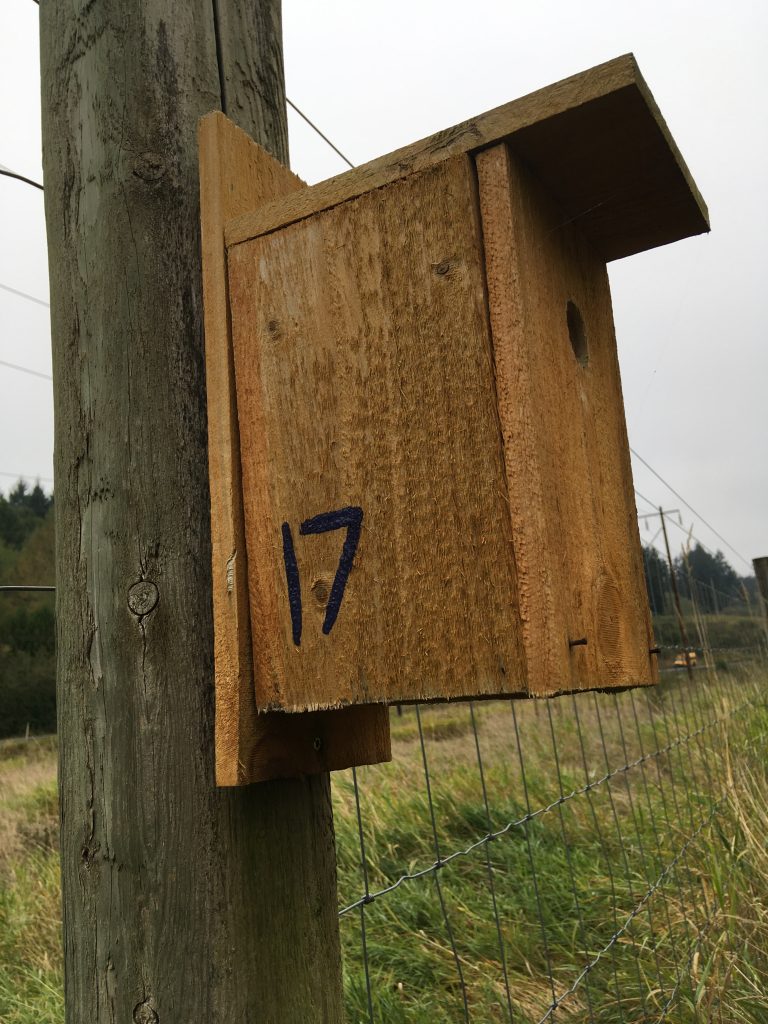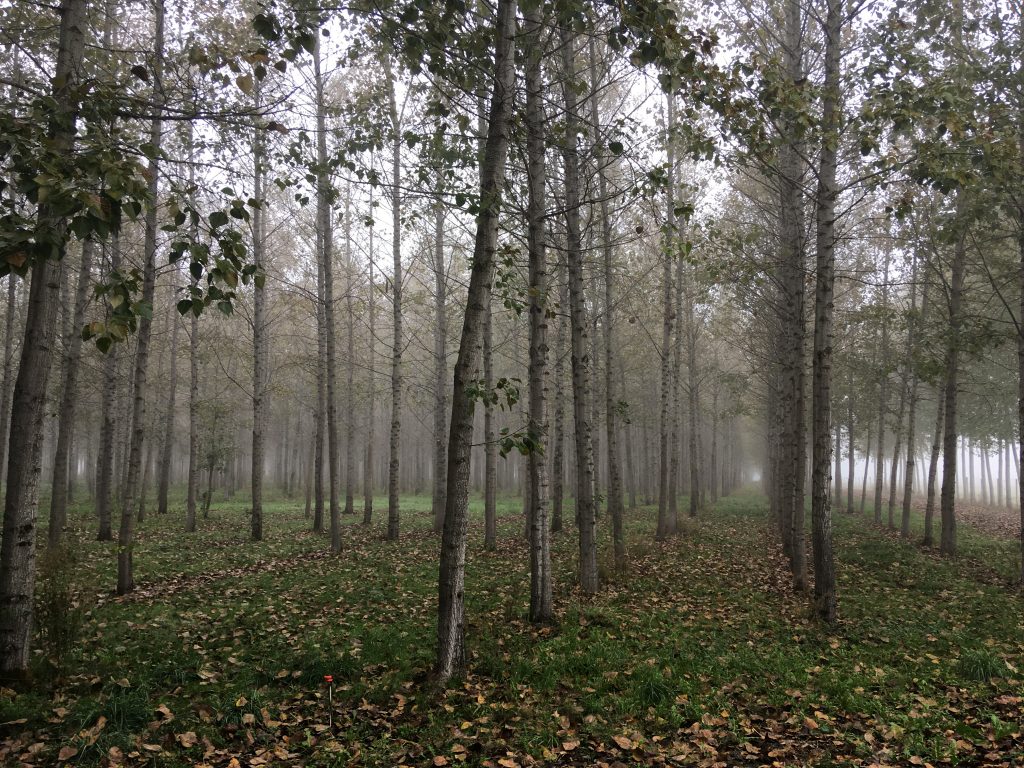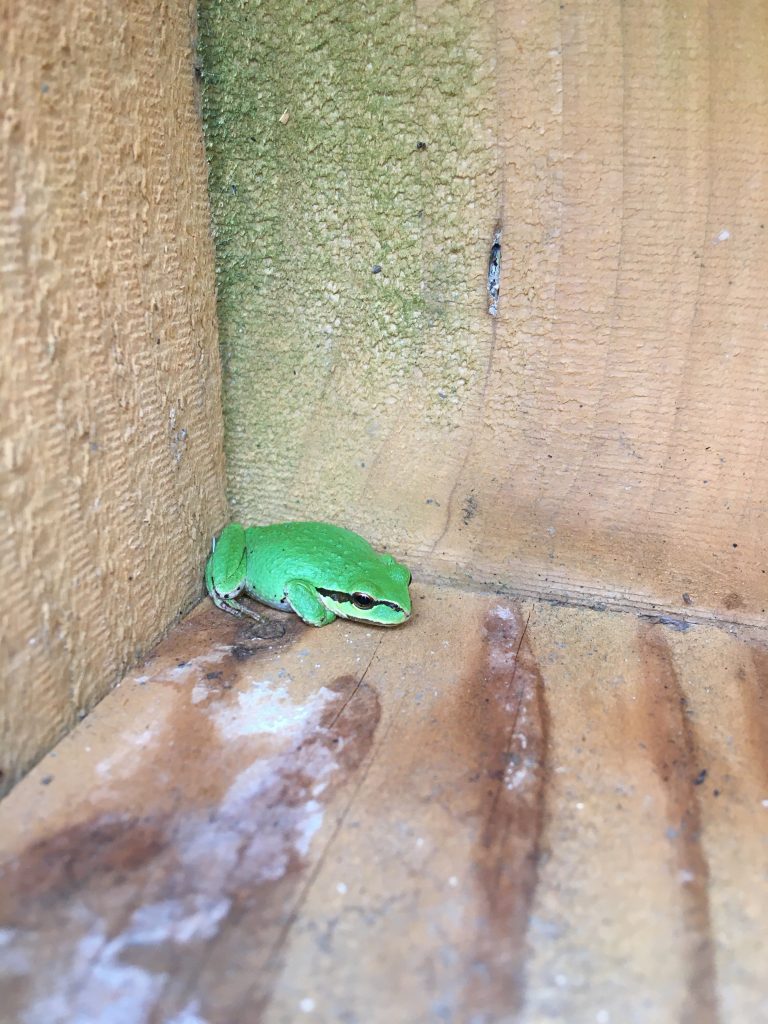By Rachel Hudson

In July of 2019, four BHAS board members (including myself) set out to install twenty-one wooden nest boxes at the City of Chehalis Poplar Tree Plantation in Adna, where reclaimed water from Chehalis’s wastewater treatment facility is used to irrigate poplar trees that are harvested periodically, and are made into things such as plywood and furniture.
Dalton Spencer of the BHAS board reached out to the Plantation last year and asked if Audubon could install nest boxes along their fence line and on some of the trees that would not be harvested on their property. The Plantation spans 250 acres, and is in an area rich with bird life year round. The officials for the City of Chehalis agreed, and with their blessing, the twenty-one nest boxes (made by students at the Adna School) were placed on the tall fence posts and several oak trees across the Plantation. Our guess at the time was that Violet-green Swallows and other swallow species from the nearby fields would be the most likely species to nest there, but with the habitat offering much in the way of diversity in birds, we knew it would be a surprise and a learning experience when cleaning time would come in fall of 2020.
In October of 2020, all the nest-building and chick-rearing was done for the year, and Kathleen Snyder and I went over to the Plantation to see what the year brought.
Out of the twenty-one nest boxes built and installed, here is what we found:

Four nest boxes had successful Black-capped Chickadee nests (tiny fragments of eggshells were found),
Two had successful Violet-green Swallow (or Tree Swallow, but probably Violet-green) nests,
Two had starts of Black-capped Chickadee nests, but were unfinished,
Four were empty but had hornet nests, which were removed, and
Nine were broken or otherwise damaged due to various reasons, and thus had no nests.
The broken boxes most commonly just lost their front panel, many due to the excess moisture in the area weakening the wood and causing it to pull away from the nails and brads holding the boxes together. Several completely fell apart due to the wood splitting. All the broken boxes that had fallen were removed and will be rebuilt and reinstalled this winter. New panels will be made for the boxes where the wood had split.

Kathleen and I learned much while we were out cleaning the boxes. Habitat was definitely a key in which of the boxes were utilized. When the boxes were installed last summer, twenty-three species of birds were detected on the property, ranging from forest birds to marsh birds and field birds. We learned that the boxes on the fence posts closest to the poplar trees attracted the most birds; all the nests were found on boxes within several yards of the poplar trees. The boxes installed on the fence posts near the marshy area of the plantation, farthest from the trees, attracted no birds whatsoever; there, instead, the hornets built their nests. We can assume that this is because the birds of the marsh are not cavity-nesters; they build their nests in the dense grasses around the marsh. In the more open field segment of fence line, we were surprised that no swallows had nested there, but several of those were the ones that had lost panels due to the wood splitting, and the ones that were intact were closer to the marsh. One of the boxes that had lost its front panel, however, did attract a most adorable green tenant, a Pacific Chorus Frog. We left that box alone.
On the boxes installed on the oak trees, Black-capped Chickadees also nested, and it was there, too, that we found the source of the moss they used in all the other nest boxes they had populated; the ancient and protected oaks were covered in dense, plush moss. We also learned that Black-capped Chickadees will still hammer away at the wood of a nest box, even when it is already fully open for them. I have often observed them working on cavity nests in the wild, and they will peck at the inside of the chosen cavity to open it up more, and carry the resulting sawdust away in their beaks. The same behavior was noted in these nest boxes, for the outer edges of the entrance holes were often pecked at to be a bit wider, and many sawdust flakes were found in the Chickadees’ nests.
We are very grateful to the City of Chehalis Public Works Wastewater Division for their generosity in allowing us to maintain nest boxes on their property to help give local species of birds a home, and very happy to know that in just one complete nesting season, an astonishing 50% of the usable boxes had successful nests or starts of nests in them. When the broken boxes are repaired, we will likely move some to be away from the marsh in order to give more birds access to them.
It was incredible for me to experience this, as I have never gotten to clean nest boxes for wild birds before, so all of this knowledge is new to me and I greatly enjoyed absorbing every moment.







